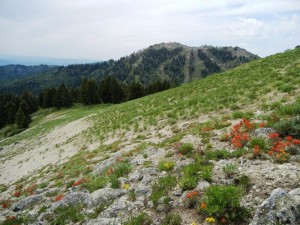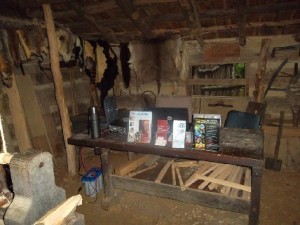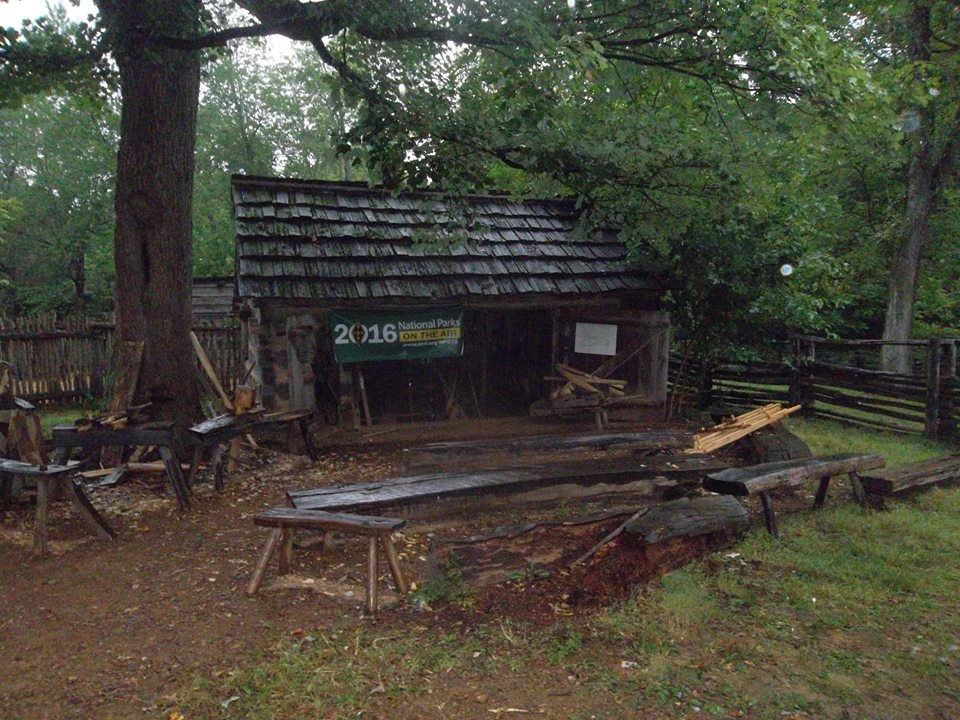
St. Croix River looking north from Interstate State Park, Minnesota. By Aaron Fulkerson – CC BY 2.5.
Last week, I did two National Parks On The Air (NPOTA) activations of the St. Croix National Scenic Riverway. I did both of them from William O’Brien State Park in Minnesota. My station consisted of my Yaesu FT-817, powered by a 12 volt sealed lead acid fish finder battery, The antenna consisted of a Hamstick mounted on the back of my car. The QRP (low power, 5 watts) radio and very modest antenna have proven quite effective, especially on 20 meters.
During the ARRL NPOTA event, Amateur Radio operators are setting up their stations in various units of the National Park Service (NPS) and making contact with other Amateurs around the world. Since the beginning of the year, there have been over 11,000 activations from 449 different different units of the NPS (with only 40 not yet activated), with over 600,000 individual two-way contacts.

William O’Brien State Park, Minnesota. By Greg Seitz (The.dharma.bum at English Wikipedia) – Photo by Greg Seitz (The.dharma.bum), CC BY-SA 2.5.
I made the quick jaunt to William O’Brien on Friday in order to work Patrick, N9OQT, who was set up at the Lincoln Boyhood National Memorial in Indiana. Patrick was there doing an Amateur Radio demonstration for a conference of state park superintendents from around the country, and he put out a call for activators to work him from different state parks around the country. My five watts can be extremely effective using CW (Morse Code), but I thought it would be a challenging contact using voice. However, since one of the purposes of the event was to demonstrate Amateur Radio to the gathered park officials, Patrick wanted to use voice only. I started out by setting up in the parking lot of the park’s visitor center. Even though this location is quite a distance from the river, it’s at a much higher elevation, and I thought it would make the difficult contact easier.
I needn’t have worried, since he copied my 5 watt signal quite well. I immediately drove down to the river, and he copied me quite well from there as well. He made a total of 124 contacts, including a total of eight state parks around the country.
Patrick’s operating location was an interesting juxtaposition of history and modern technology. He was set up in the recreation of Thomas Lincoln’s (Abe’s father) 1820’s carpentry shop. In addition, he reported local interference from roosters crowing in the background. His radio and logging computer are shown on the old workbench, with the power source being the battery shown on the floor.
After working Patrick, I went to CW and worked about 30 more contacts over the course of the next hour.
On Saturday, my son and I made another trip to the St. Croix River, and I decided to do another activation. We spent most of the day exploring the glacial potholes at Interstate State Park in Taylors Falls, Minnesota. The parking lot near the potholes is more than a hundred feet from the river, and the other unit of the park has somewhat difficult access due to road construction. So we decided to stop at William O’Brien on the way home, where I set up in the same spot as the previous day near the boat landing. This time, I didn’t get “spotted” on the DX cluster, so I spent about an hour answering other calls in order to make my required 10 contacts. The most interesting contact was with Jim, K7MK, who was doing a SOTA activation in Idaho.

Shafer Butte, Idaho. National Forest Service photo.
Summits On The Air (SOTA) is another Amateur Radio activity in which hams set up temporary stations on various mountain summits. These can range from very modest summits that can be reached by car, to ones requiring serious mountaineering skills. Jim’s location appears to be one that was somewhere between these two extremes, as he was atop the 2311 meter Shafer Butte in Idaho. He reports that his activation involved a 6 mile hike, including a 1400 foot vertical ascent.
William O’Brien is a 1520 acre park founded in 1947, and located on the St. Croix River less than an hour from Minneapolis and St. Paul. It’s location close to the metro area makes it an extremely popular park, but its being on the St. Croix can make it very much of a wilderness experience.
Minnesota’s Interstate State Park is located slightly further away from the Twin Cities, in Taylors Falls, Minnesota. It was founded in 1895. The main visitor center is located immediately adjacent to the downtown area of Taylors Falls, and the campground and other facilities are located about a mile down the river. It’s also a very popular park with Twin Cities residents to explore the glacial potholes, and is also a popular venue for rock climbing. It is located across the river from the Wisconsin state park bearing the same name, from which I’ve done a previous NPOTA activation.
![]()


